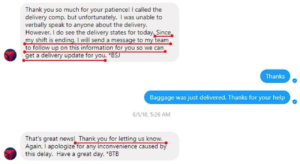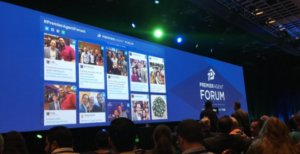Tips to Grow your Small Business Through Social Media
The value of social media for businesses continues to grow, especially in light of COVID-19 pandemic. Social media allows for businesses to maintain connections with existing customers and extend their reach to new audiences. With over 2 billion worldwide users, everyone knows social media has now become a crucial part of an overall business strategy. But as a small business, joining social media effectively can be easier said than done. Let’s take a look at 5 ways you can start using social media to grow your small business.
1. If you can’t create, curate.
Posting consistent content is one of the most important factors that goes into increasing engagement. If you can’t create new content on your own, curate other’s content. Tools such as Pocket, Flipboard and Feedly allow you to curate useful, relevant content from other sources and share due credits. We recommend posting a minimum of twice per week and a maximum of 5, depending on your content type and industry.
2. Use video to keep your audience engaged and growing.
Nowadays, visual content is key. Algorithms have changed and evolved to actually preferring video content over all other forms. Going even further, 72% of consumers prefer videos over manuals to decide on a buy. There are numerous types of video content you can create to keep your audience engaged and growing. Consider sharing behind-the-scenes looks at your business, product launches, how-to’s, service examples, etc.
3. Involve your followers.
Finding ways to directly involve your followers in your content is another way to maximize engagement. Consider making quizzes, polls, giveaways and contests. Many brands will create giveaways and contests and require those that enter to like, comment or share their posts with their friends. This is a simple and effective way to drastically increase your awareness among your followers and a larger audience.
4. Utilize hashtags.
Hashtags are one of the best ways to improve your searchability, gain more awareness and expand the reach of your content. This goes beyond just creating your own hashtags. Find trending hashtags that are pertinent for your business:
- For your subject matter: #HowTo’s, #Hacks, #DIYS
- For your industry: #Food, #Fashion, #Auto
- For your audience: #StartUp, #WannaBeChef, #FitnessFreaks
Research what’s trending among your audience and find a relevant way to involve yourself into the conversation.
5. Reach out to influencers.
Influencer marketing is a great way for new and small businesses to gain traction amongst a large audience. Influencers are now seen as more trusted, relatable and popular than celebrities. Consumers turn to them more for advice on what products to buy, services to use, brands to trust, etc. There are a number of tools that can help you research who the best influencers are in your industry and make it easier for you to reach out and connect with them.
Final Thoughts
To be successful on social media it’s ultimately about giving value to your audience, whether that be through educating or entertaining. Users are constantly being bombarded with massive amounts of content and ads everyday. Meaning you have to find ways to bring value to them and differentiate yourself from the competition. Strategies will differ based on your industry and audience, but these 5 tactics are a great way for anyone to get started. If you need further assistance in social media marketing, or any other area of digital marketing, contact us today!
Onimod Global releases the latest digital marketing news and essential marketing tips every Tuesday and Thursday! To catch up on the top digital marketing news and trends, click here.



